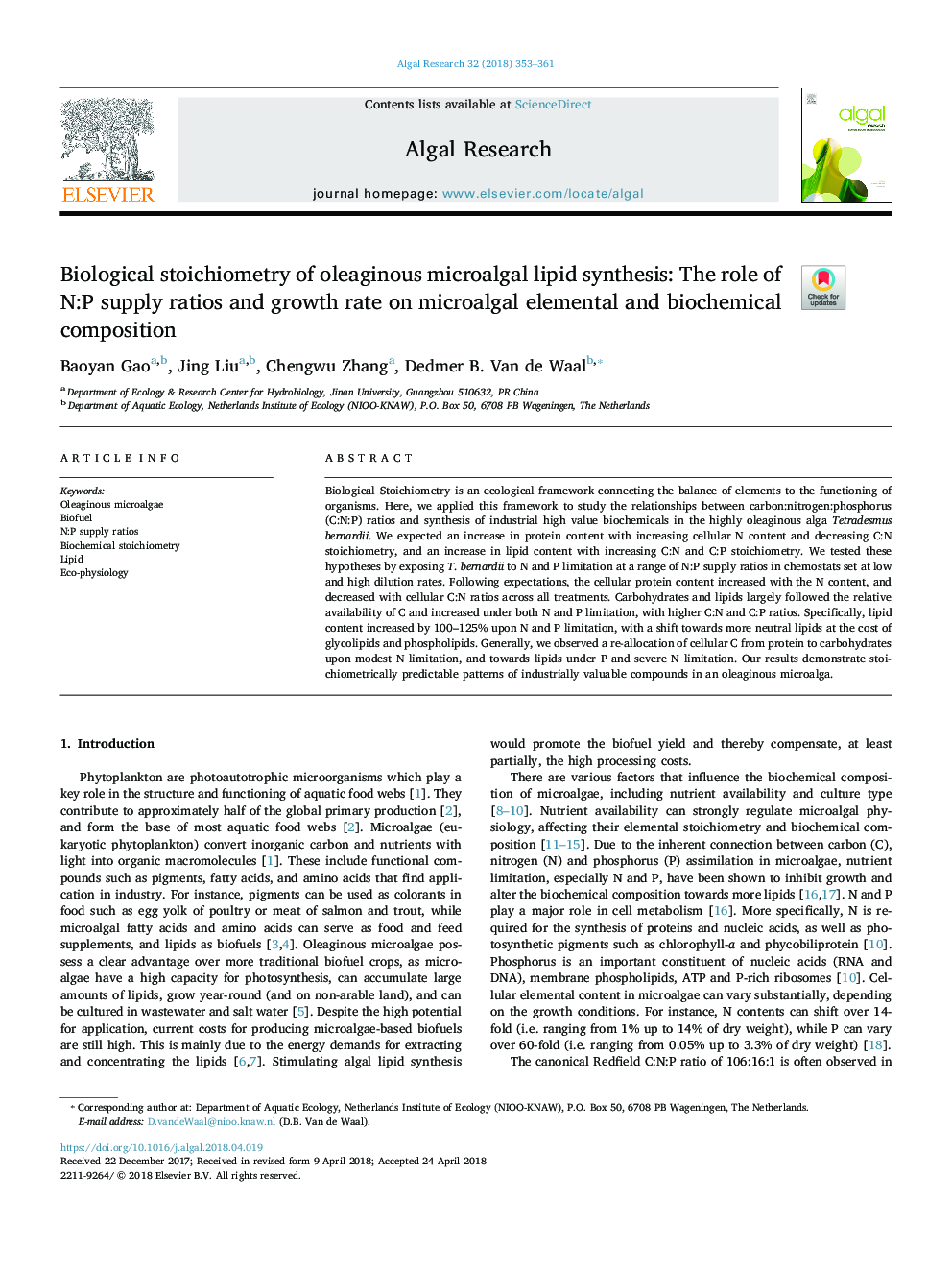| Article ID | Journal | Published Year | Pages | File Type |
|---|---|---|---|---|
| 8085828 | Algal Research | 2018 | 9 Pages |
Abstract
Biological Stoichiometry is an ecological framework connecting the balance of elements to the functioning of organisms. Here, we applied this framework to study the relationships between carbon:nitrogen:phosphorus (C:N:P) ratios and synthesis of industrial high value biochemicals in the highly oleaginous alga Tetradesmus bernardii. We expected an increase in protein content with increasing cellular N content and decreasing C:N stoichiometry, and an increase in lipid content with increasing C:N and C:P stoichiometry. We tested these hypotheses by exposing T. bernardii to N and P limitation at a range of N:P supply ratios in chemostats set at low and high dilution rates. Following expectations, the cellular protein content increased with the N content, and decreased with cellular C:N ratios across all treatments. Carbohydrates and lipids largely followed the relative availability of C and increased under both N and P limitation, with higher C:N and C:P ratios. Specifically, lipid content increased by 100-125% upon N and P limitation, with a shift towards more neutral lipids at the cost of glycolipids and phospholipids. Generally, we observed a re-allocation of cellular C from protein to carbohydrates upon modest N limitation, and towards lipids under P and severe N limitation. Our results demonstrate stoichiometrically predictable patterns of industrially valuable compounds in an oleaginous microalga.
Related Topics
Physical Sciences and Engineering
Energy
Renewable Energy, Sustainability and the Environment
Authors
Baoyan Gao, Jing Liu, Chengwu Zhang, Dedmer B. Van de Waal,
